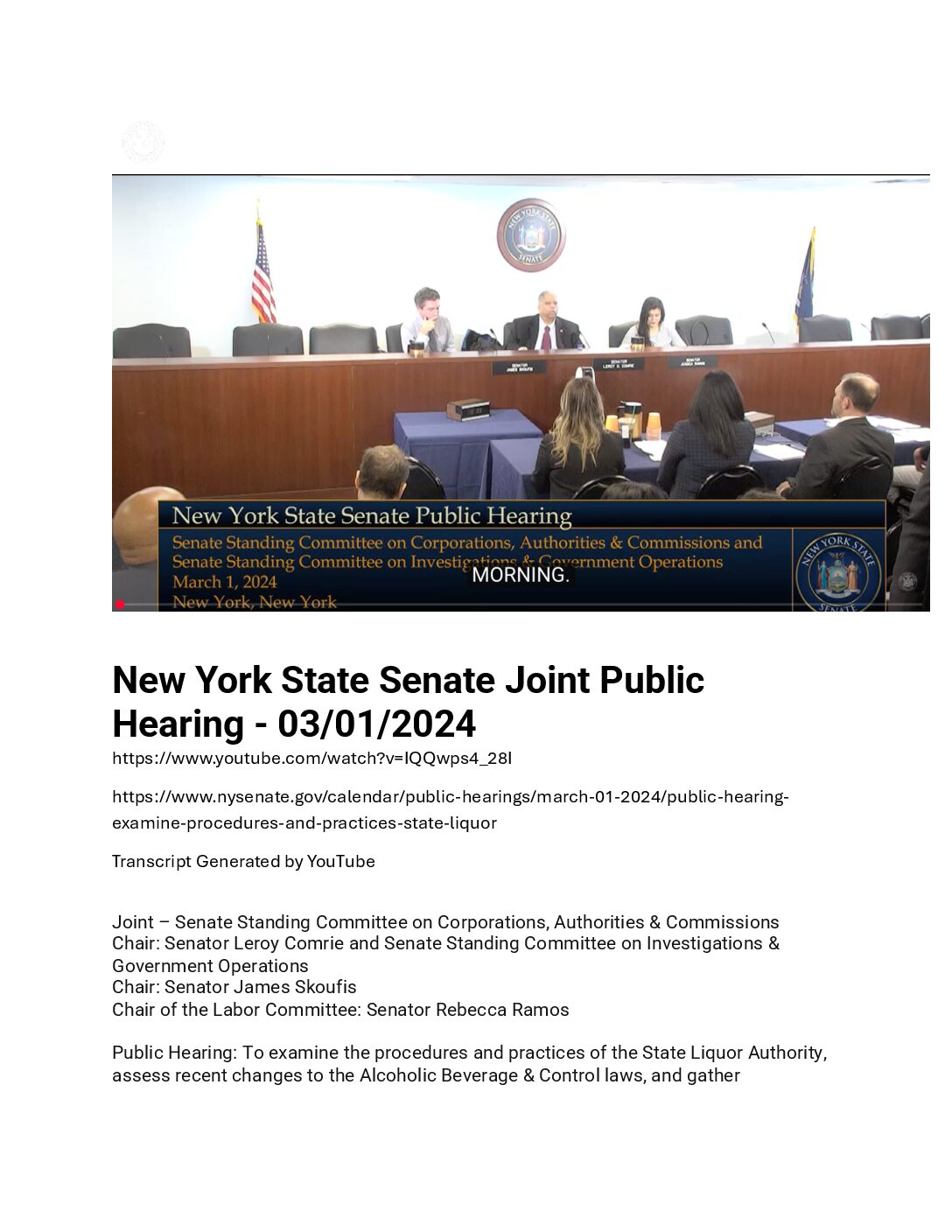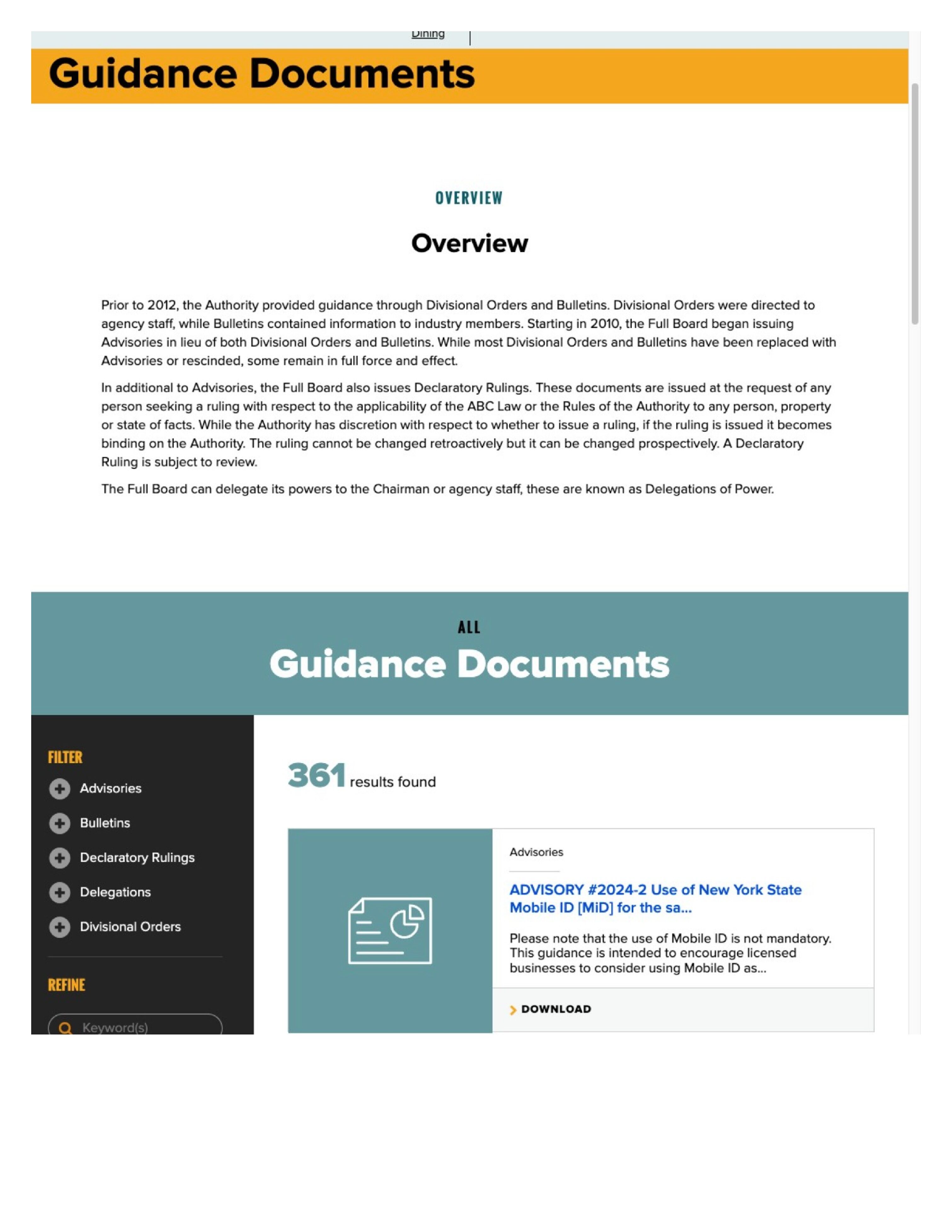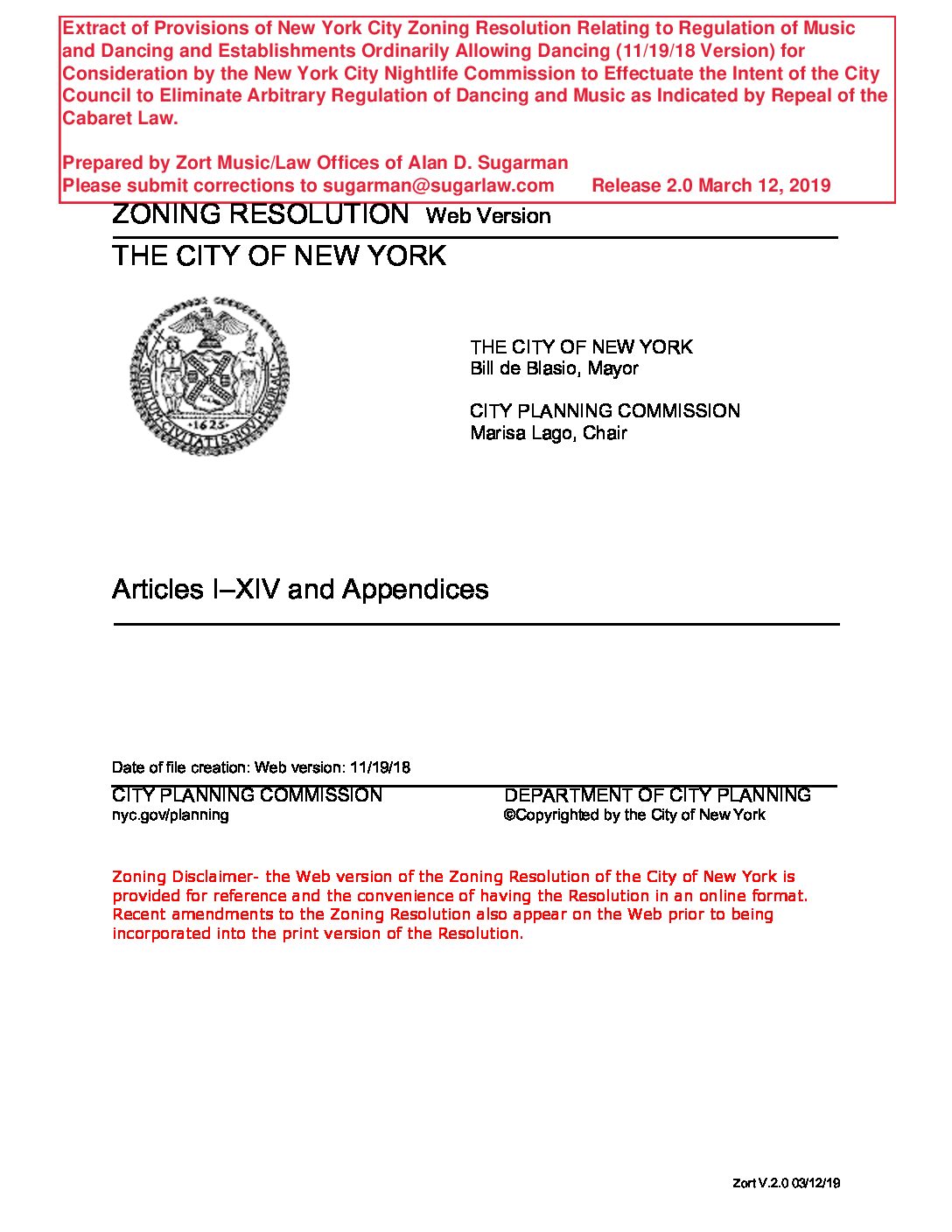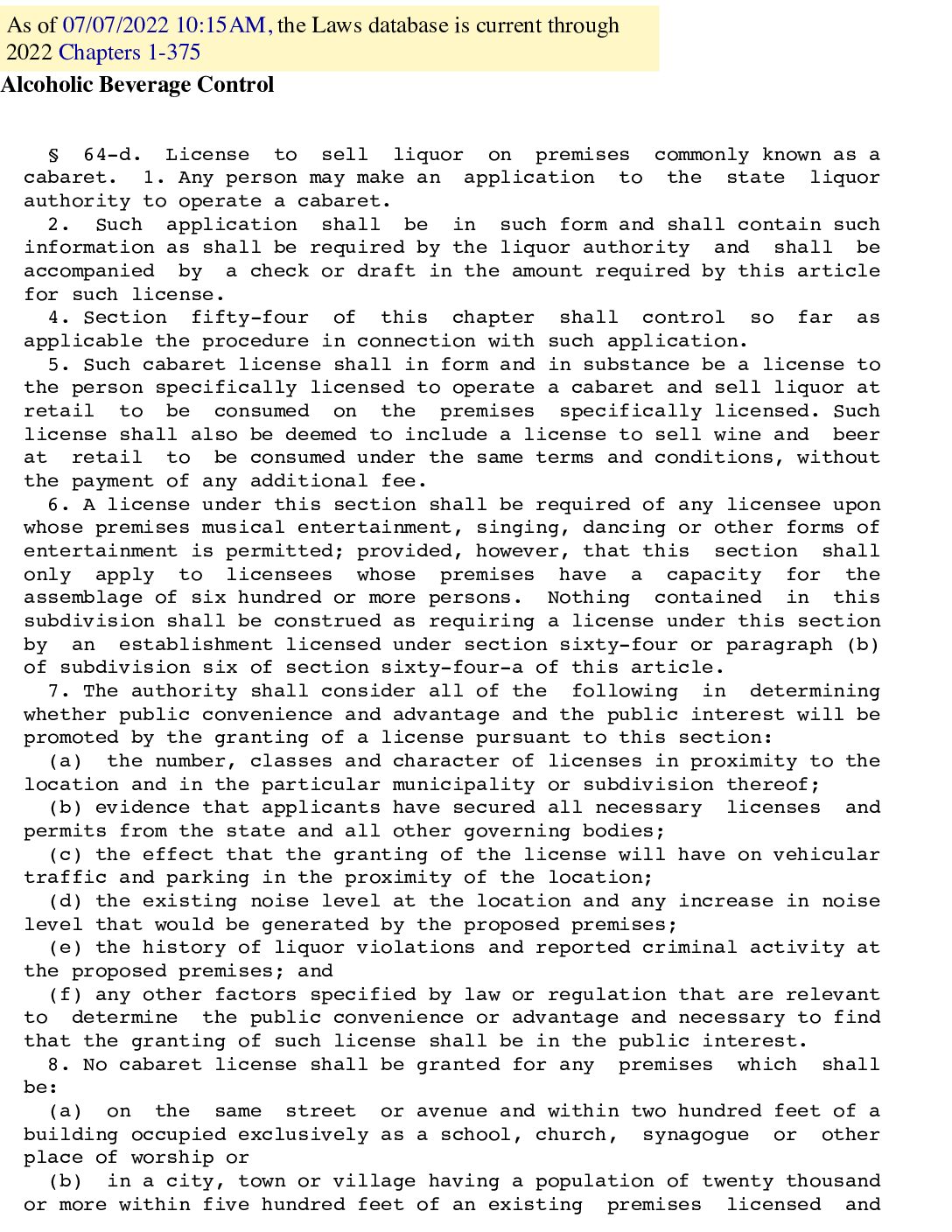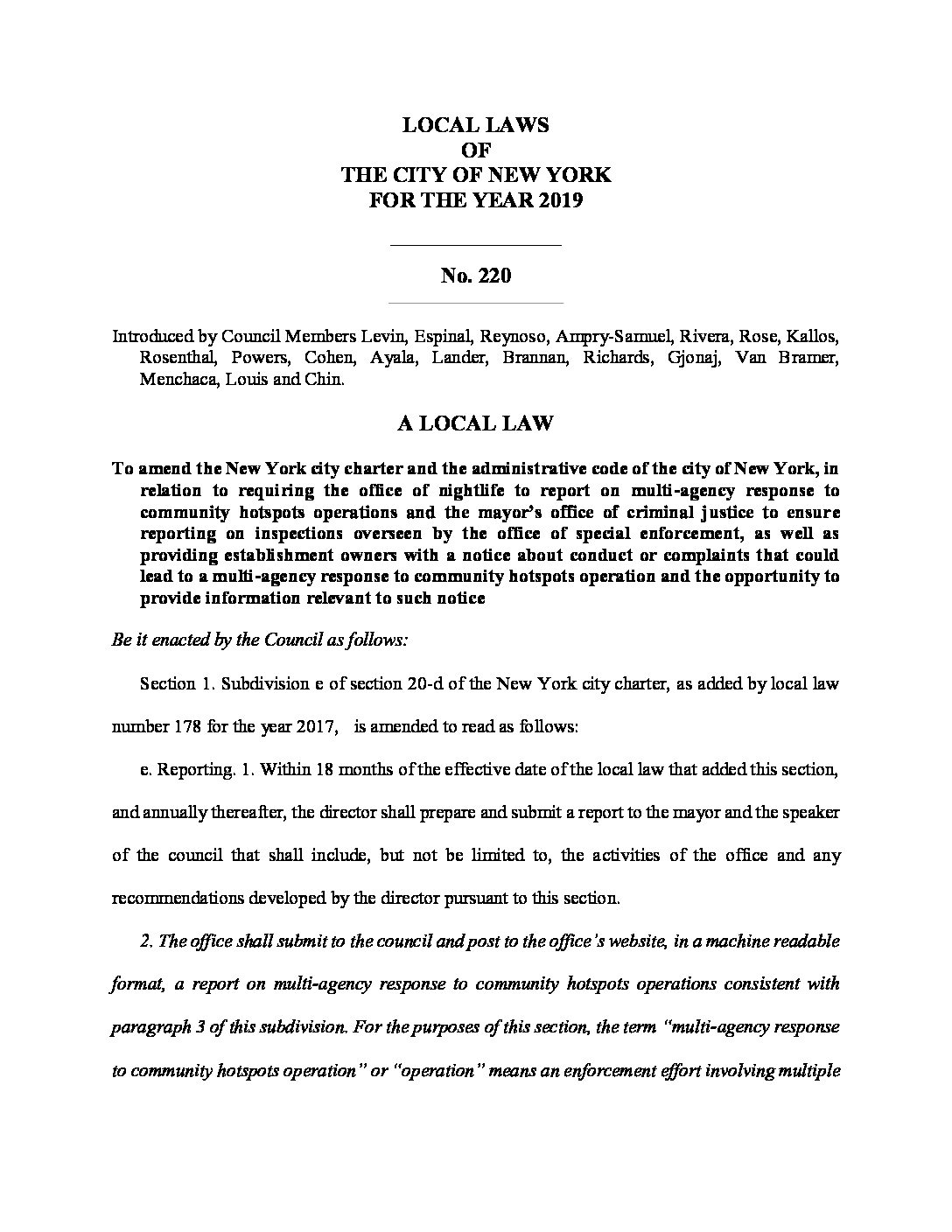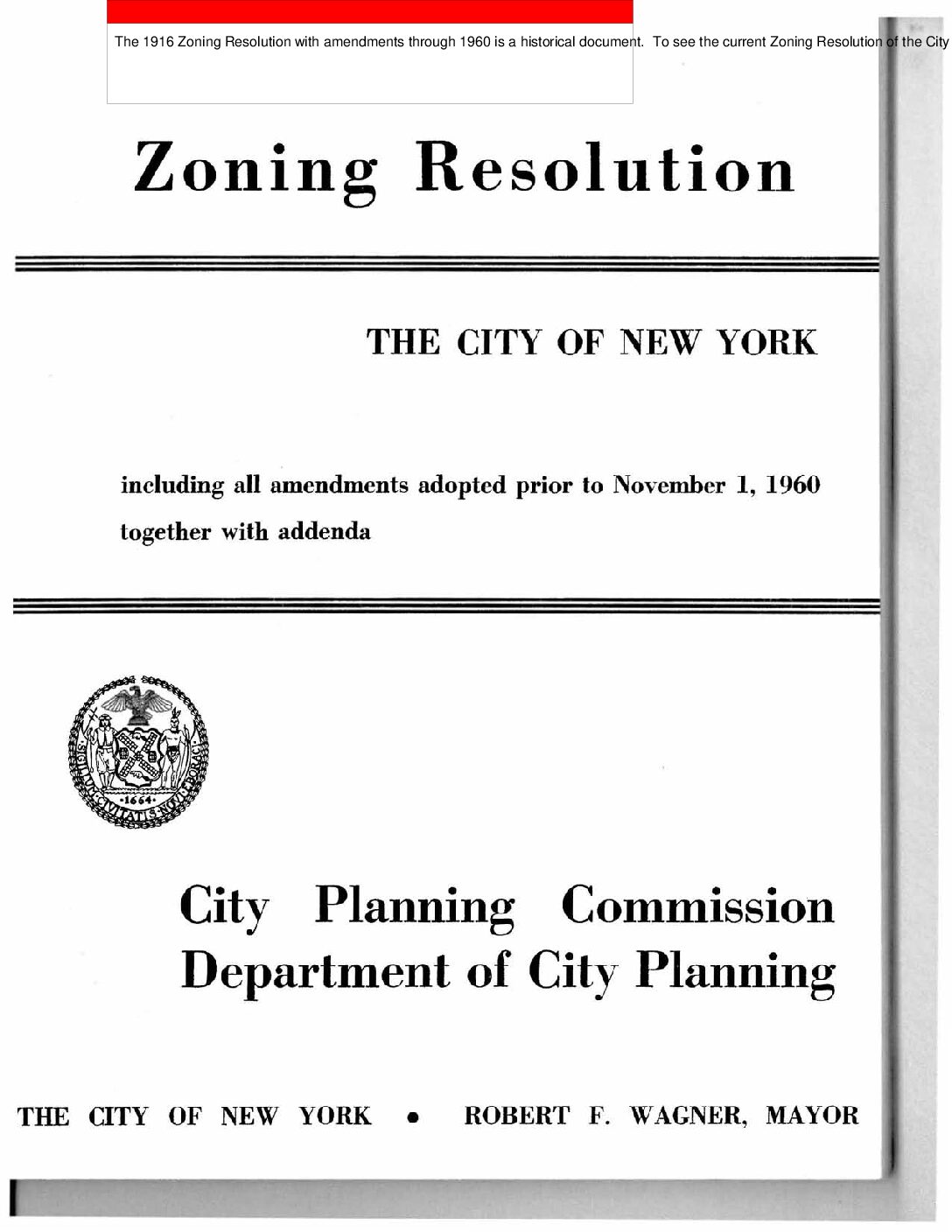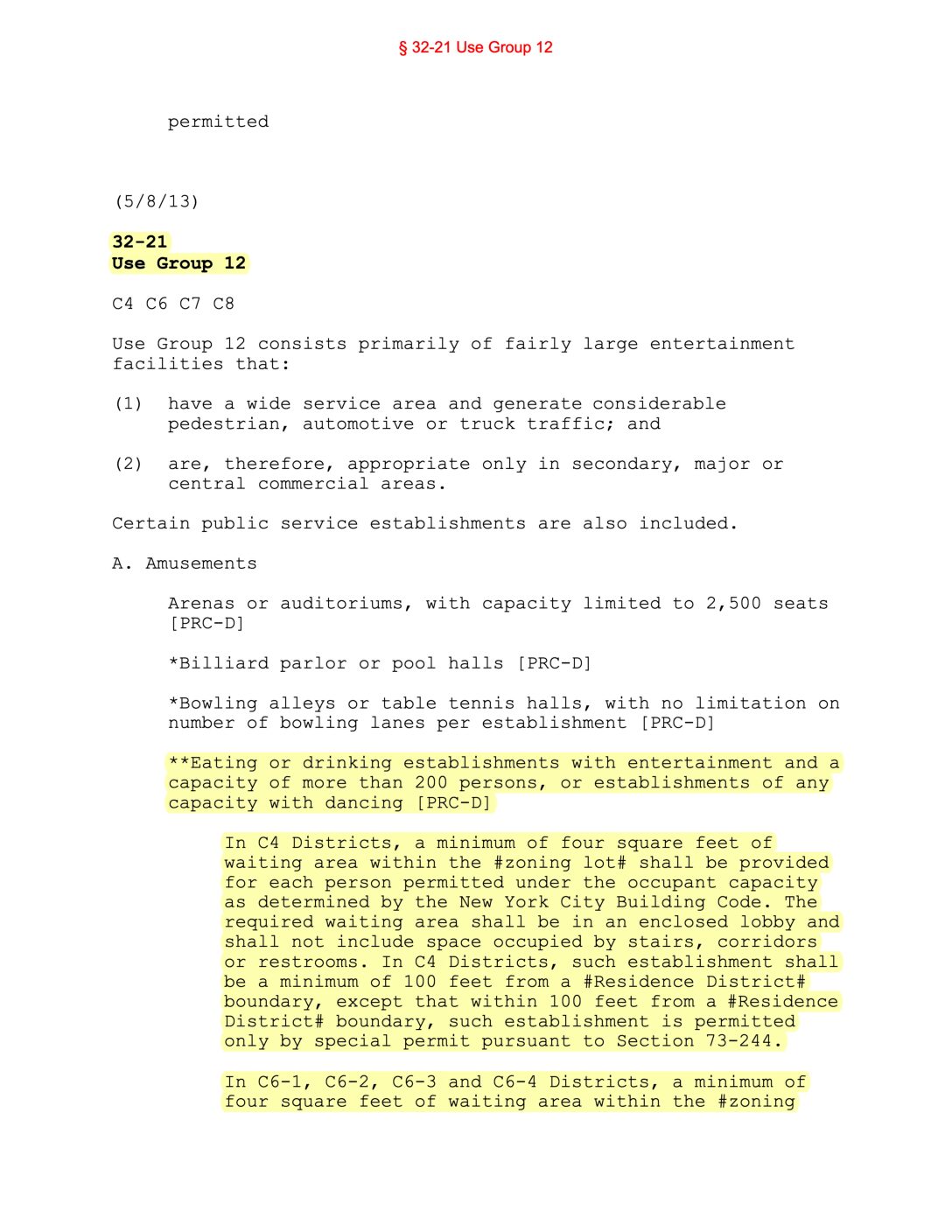Public Hearing March 1, 2024: To examine the procedures and practices of the State Liquor Authority, assess recent changes to the Alcoholic Beverage & Control laws, and gather recommendations to improve the efficiency, responsiveness and transparency of the SLA to businesses across the state.
Document Category: Statutes and Regulations
SLA Rule-Making – Regulations at 9-NYCEE and By Advisories
In our view, the acceptable practice is for adminstrative agencies to make rules in the form of a rule making procedure with prior notice and for rules to be promulgated in a regular organized manner as the agencies rules and procedures. The SLA departs from this method and rather seems to make rules in the form of advisories which are irregularly indexed.
New 2024 ABC Amendment Allows Filing of Notice When Filing Application
In 2024, the Alcohol and Beverage Control Law was amended to allow liquor license applicants to provide notice to community boards at the time application is filed with the SLA, easing burden on applicants.
SLA Circus Disco ABCL § 64[6-a]
In 1980, the Court of Appeals held that the SLA exceeded it authority when acting as a zoning authority. Circus Disco v. NYS LIQ AUTH, 51 N.Y.2d 24, 431 N.Y.S.2d 491, 409 N.E.2d 963 (1980). The Legislature apparently responded by adding § 64[6-a]https://codes.findlaw.com/ny/alcoholic-beverage-control-law/abc-sect-64/. There are, however, more fundamental reasons. Parking and traffic are essentially problems… Continue reading SLA Circus Disco ABCL § 64[6-a]
Zoning Resolution – Provisions Relating to Dancing and Music
Provisions of the New York City Zoning Resolution Concerning Regulation of Dancing and Music. Provisions related to dancing and music are marked in yellow. The provisions relating to dancing and music were added in 1990 as a result of the 1989 City Planning Report, the background of which is described in Chevigny – Gigs: Jazz… Continue reading Zoning Resolution – Provisions Relating to Dancing and Music
Text of NYC Zoning Resolultion
The Zoning Resolution consists of 14 Articles and 11 Appendices, plus 126 Zoning Maps, that establish the zoning districts for the City and the regulations governing land use and development. The version linked above is an easy to use web version to the ZR, with links to legislative history. Articles I through VII contain the use,… Continue reading Text of NYC Zoning Resolultion
Statutory Authority of New York State Liquor Authority to Regulate Dancing and Music
The SLA is subject to New York’s Alcohol and Beverage Control Law. Although the SLA can regulate “Cabarets” but only if the capacity exceeds 600. There is nothing it the ABC which authorizes the questions included in the questionnaires to applicants for Licenses or Changes in Method of Operation.
M.A.R.C.H. Local Law 220 – 2019 Regulating M.A.R.C.H.
Zoning Resolution As of 1960 Prior to 1961 Revision
The 1916 Zoning Resolution as amended prior to 1961 included provision restricting the location of cabarets, defined to include dancing and music but not restaurants with fewer than three instruments. This provision was added to the 1916 resolution in 1955.
Use Group 12 §32-21
Use Group 12 applies in purely commercial and manufacturing areas and allows establishments with dancing.
